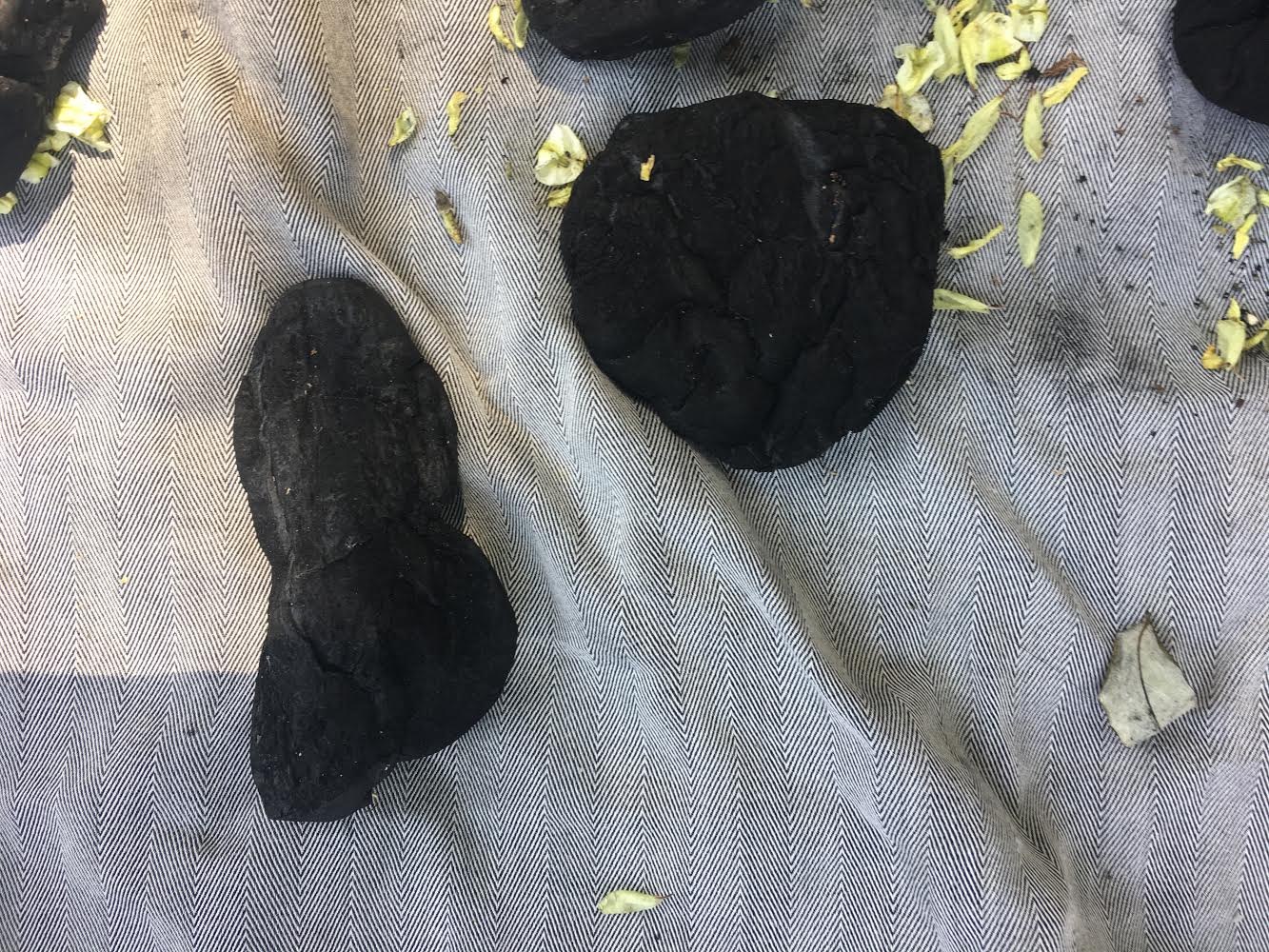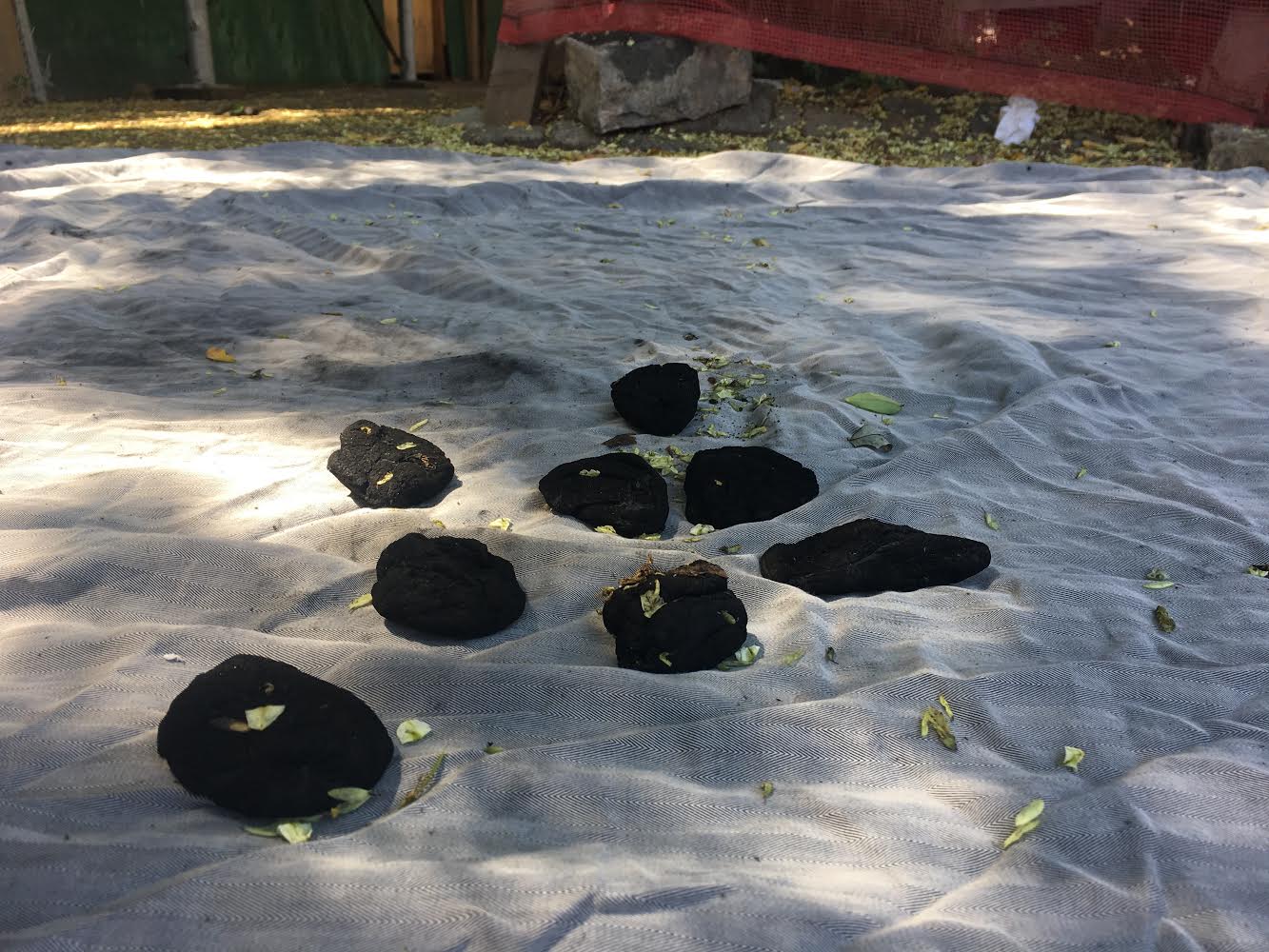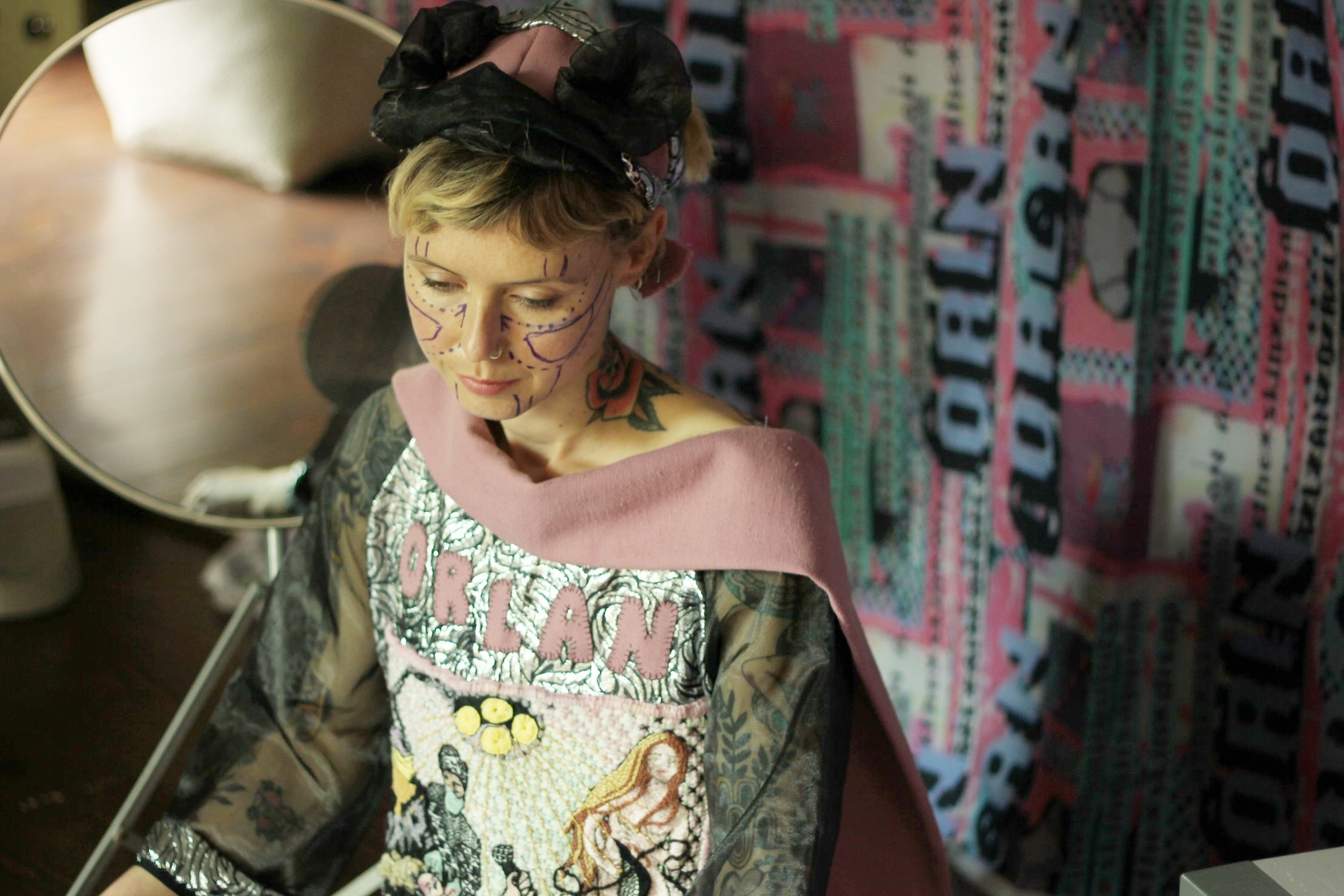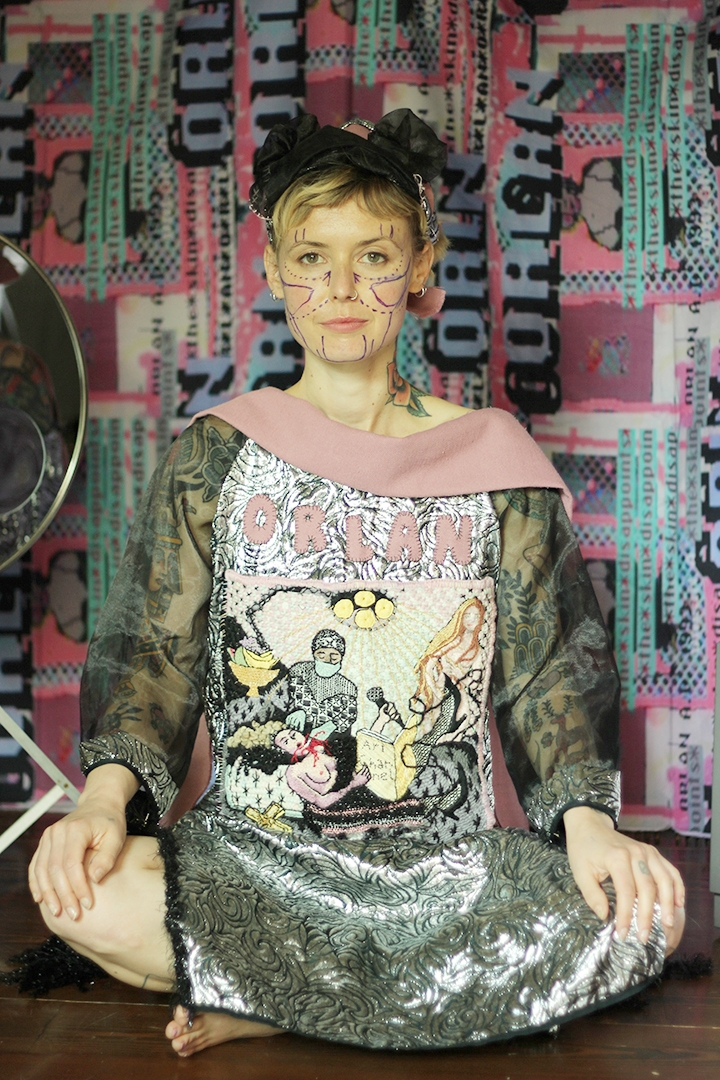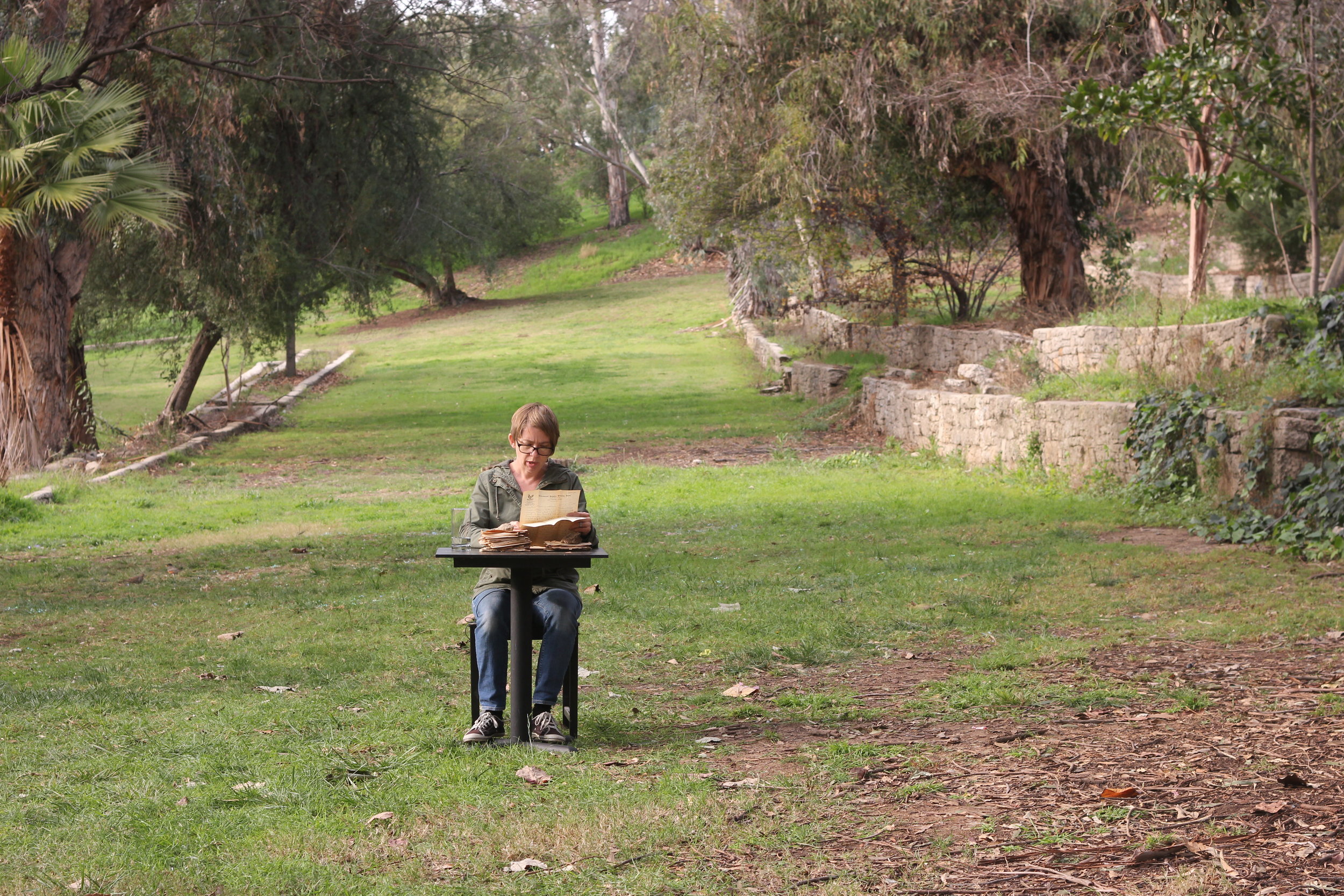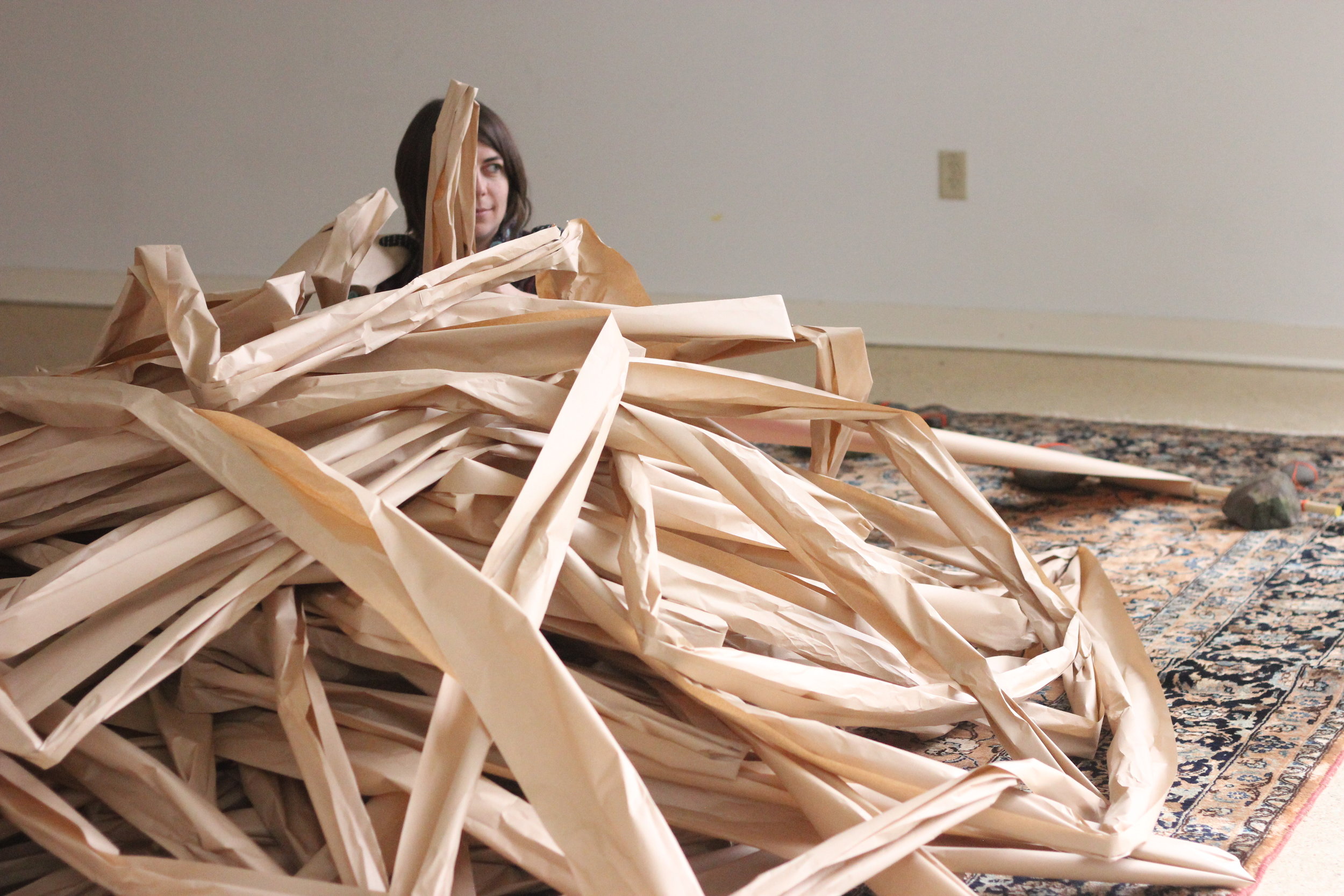Second Daytime
Second Daytime:
an online exhibition of performance art on video
February – September 2018
Second Daytime is an exhibition presented by Ortega y Gasset Projects. It's an exhibition of video documentation of women artists performing solo in locations outside of and nearby their studios, in new work created to premiere in this series.
Looking back to the birth of video art when the Portapak became available, artists brought this previously unreachable technology into their studios to utilize it as a multi-tool. Because of its low cost, portability, and immediacy the tenor of much early video art was experimental, and used as a tool for protest and reflection on identity. Second Daytime seeks to use the medium of video in its essential way again, as an immediate, experimental art medium for poignant contemplation as well as social and political resistance. The artists vulnerability and strength are highlighted in these honest depictions.
Each of the performance artists featured is recorded or shot with instruction by the curator Sarah Rushford , using a single camera, available daylight only, little or no camera movement, and minimal editing. Second Daytime will unfold over a period of several months beginning with Cayla Skillin-Brauchle who performed Conduit on January 26, 2018 at Willamette University in Salem Oregon, where she teaches and maintains her art practice. The second installment is a presentation of Dearest Pauline by Michele Jaquis who performed at Elysian Park in Los Angeles on March 19, 2018 and is a performative reading of letters from one hundred years ago in April 2018. The third is Can I Speak of Carnal Art by Martha Daghlian. She performed the work in May 2018 in Portland Oregon where she works and maintains her art practice. The last installment is La Vareada (the beating of the fruit trees) (shot by Calvin Burton) by Brooklyn artist Mónica Palma who climbs then performs in a tree near her studio.
___________________________________________________________________________________________________________________________________
La Vareada (the beating of the fruit trees)
Mónica Palma
Mónica Palma exits her studio in Brooklyn carrying a ladder and a plastic bag. She crosses the busy street and props the ladder next to a tree near a construction site. She lays out a sheet of fabric near the tree and climbs the ladder. She sits in the tree and takes out a small piece of dough from her bag, puts it in her mouth, kneads it with saliva, takes it out, spits on it, and continues to knead it. The dough blackens, and so does her mouth, teeth, hands, and arms. She spits black onto the ground. She casts textures of her fingertips on one side of the dough, and on the other she casts the bark of the tree. She drops what she calls the "fruit" onto the sheet and takes out another piece and begins working it with purpose. She does this work for thirty minutes, calmly and without affect, until she exhausts the dough. She climbs down and folds the chewed fruits neatly into the fabric and returns to her studio.
Is climbing a tree illegal? Maybe, but it’s the undefined level of illegality that is intriguing to Palma. She emigrated from Mexico in 2005 and she says her work is entirely personal and comes from her direct experience. And her work is also metaphoric, she uses references from her own experience to lend meaning to her life and others' lives. The world she makes in this tree is also a cooler forest realm hidden in plain sight, here, in the hot city, a balm. She is afraid the regime will stop her, she hopes the regime will stop her. (Maybe then she will be able put an evil spell on them.) Her performance is matter of fact, unaffected. She is being an eternal worker, she is being a farm worker, a construction worker, a harvester, a baker. She is an artist, who is both stirring anger in, and comforting the viewer. The accrual of black residue on her mouth and hands is simply a result of her work and she pays no attention to it, but because of it she is a spitting demon, a forest witch, a protester, preparing for the casting of a spell. She is a conjurer of Ana Mendieta’s spirit. She seems angry and powerful, but she is and thoughtful and calm in this work. She’s a master-choreographer of a dance of metaphor and allusion, the cloth of references she weaves is weblike, and magically strong.
I want to occupy places that my body never occupied before and do so in forgotten but forbidden places such as the manhole covers or urban trees. I want to control my visibility and from a bird’s angle to look around. Down there (abajo) on the sidewalk or up there (arriba) in the tree branches I establish a home base, a location, a place were making happens in the public eye.
Arriba, I use the mouth as a maker and as a cursing and blessing tool. With the mouth, I mix ingredients like burnt tortillas and activated charcoal. This childlike oral fixation helps me to leave my substance in the objects or surfaces while the surfaces also leave a trace of themselves in me or in the dough. Particles of moss, bark, and filth are encased in these oval-shaped molds, or what I call fruits. Fruits from a fruitless tree that I let drop as if they were pieces of words and sentences eager to be fully enunciated.
Inside of my plastic bags there is a dough made out of corn starch, glue, vinagre and vegetable oil. In the 80’s my mom used to make kitchy flower arrangements for catholic celebrations. Also inside of the bag there is activated charcoal (made out of hardwood trees like hickory and birch) used for cleansing and detoxing from indigestion to drug overdose! And then there is saliva in the mix, a kind of binder for the charcoal and the dough. The ashes of those unknown trees are going back to this urban tree. -Mónica Palma
Mónica Palma
Mónica Palma studied visual art at the Universidad Veracruzana in Xalapa, Veracruz, Mexico. In 2008 she received her MFA in Painting and Printmaking at Virginia Commonwealth University. She has been living and working in Brooklyn since 2008. Her work has been shown at TSA (NYC), 245 Varet Street (NYC), Ortega y Gasset Projects (NYC), the Nelson-Atkins Museum of Art (Kansas City) Soloway Gallery (NYC), Dixon Place (NYC) and Deanna Evans Projects (NYC). She was a 2018 resident at Stoneleaf Retreat (Kingston New York).
Martha Daghlian
Can I Speak of Carnal Art
Dressed in a handmade ceremonial costume Martha Daghlian enters the frame from the right, kneels down in front of a large circular mirror and lifts a small black veil from her face. Then she draws, with a surgical pencil, a series of marks on her own face that resemble the marks used to guide cosmetic surgery. Daghlian has an affinity for ORLAN'S work, and creates icons and ceremonies venerating women like Saint ORLAN, "thanking her for sharing divine visions of her decided self."
ORLAN is the well known and controversial French performance artist whose most famous work involved a series of cosmetic surgeries that the artist received while fully conscious and reading aloud from various avant-garde texts.
“The Reincarnation of Sainte-ORLAN, a project that started in 1990, involves a series of plastic surgeries through which the artist transformed herself into elements from famous paintings and sculptures of women. ORLAN's goal in these surgeries is to acquire the ideal of female beauty as depicted by male artists.” 1
Daghlian feels that early criticisms leveled at The Reincarnation of Saint ORLAN were distorted by gendered assumptions that denied ORLAN the agency granted to other (male) artists who used their bodies as a medium.
Daghlian's costume, facial drawing, fabric backdrop and video montage have a vibrant immediacy that resembles a child's creation. Daghlian uses the religious connotations of her ritual as a device that encourages respectful reconsideration of ORLAN's work and her importance as a feminist and an artist. Her rituals point to the sanctity and transcendence of performance and video art themselves. We see permanent tattoos through the translucent fabric and in the open back of Daghlian's garb, the facial drawing seems like an extension of them; risky, ritualized marks, resisting accepted ideas of selfhood, sexuality, feminism, and fairness.
The set for the video shoot also includes a fabric backdrop with a pattern made from video stills and digital drawings based on the The Reincarnation of Saint Orlan, 1993, and an original video and audio composition that appropriates excerpts of the performance.
Martha Daghlian
Martha Daghlian is a multi-disciplinary artist, curator, and writer who lives in Portland, Oregon. She is founder and co-curator of Grapefruits, a collaboratively-run exhibition and community space, and is the author of the Grapefruit Juice Artist Resource Guide, a free comprehensive listing of visual arts venues and resources in the Portland area. She has received grants from the Andy Warhol Foundation for the Visual Arts, Precipice Fund, and the Regional Arts and Culture Council, and is a former vice-president of Flight 64 non-profit print studio
1. From the Wikipedia article Orlan https://en.wikipedia.org/wiki/Orlan translated from the French by Deke Dusinberre; essays by Bernard Blistene, Christine Buci-Glucksmann, Regis Durand ... (2004). Orlan : [carnal art] (English lang. ed.). Paris: Flammarion. ISBN 9782080304315.
Dearest Pauline
Michele Jaquis
On March 19, 2018 in Elysian Park in Los Angeles, CA over the duration of five hours, Michele Jaquis read aloud seventy letters that her great-grandfather Barnett (Ben) Kahn wrote to her great-grandmother Pauline Zuckerberg one hundred years ago. Between March 1918 and April 1919 Ben who was in US military training in Long Island NY and later on active duty in France during WWI wrote to Pauline, who lived in New York's Lower East Side and later in the Bronx. The letters are an ordinary and arrestingly tender telling of the drama, novelty, and trauma, as well as the tedium, uncertainty, and physical and emotional challenges of military service.
Michele's reading is matter-of-fact, open, and allowing, with occasional faltering because of low legibility and the disintegrating condition of the paper. The long reading is part memorial to her relatives and part endurance performance art. Complexities of war, gender, race, and language speak through it.
The piece's length and repetition is notable, during it, the viewer's mind wanders in a powerful way, tethered just closely enough by the narrative to be allowed to discover more subtle sociological implications; such as realizing that these letters have been cut by censors. (In one way this humorously suggests that the letters may have originally been more exciting!) Then, one realizes some of the letters are self-censored by Ben because he writes on paper with the YMCA logo and measures time in relation to Christmas and Easter, in addition to Purim. Ben's subtle erasing of his and Pauline's Jewishness as Russian and Austrian immigrants and aspiring US citizens colors the writing as a foreshadowing of the genocide that would befall their relatives in the coming holocaust and demonstrates the multinode, far-reaching temperament of the art work.
The work is presented in Second Daytime as a twelve minute excerpted footage montage, shot and edited by curator Sarah Rushford. A multi-channel video of the five hour performance is forthcoming from the artist.
Michele Jaquis
Michele Jaquis is an interdisciplinary artist and educator based in Los Angeles, CA, who combines strategies of conceptual art, documentary, and social practice to examine the complexities within personal and social relationships, identity, language, and communication. Her work has been exhibited in alternative spaces, galleries, museums, and film/video festivals throughout Southern California as well as in cities across the US and in Australia, Canada, England, Ireland, New Zealand, and South Korea. Jaquis has been an artist in residence at Vermont Studio Center, Skirball Cultural Center, and the Institute for Cultural Inquiry. She is currently Associate Professor and Director of Interdisciplinary Studies and the Artists, Community, and Teaching Program at Otis College of Art and Design. Awards include a Spring 2018 Sabbatical and 2016, 2014, and 2011 Faculty Development Grants from Otis College, 2009 Vermont Studio Center Artist Grant, 2009 Voice Award Nomination sponsored by the United States Substance Abuse and Mental Health Services Administration, and Best Documentary in the 2008 Director’s Chair Film Festival in Staten Island, NY. She holds an MFA in sculpture from Rhode Island School of Design, a BFA in sculpture and experimental studio with a minor in psychology from Hartford Art School, University of Hartford, and also studied at Brown University and Burren College of Art.
Conduit
Cayla Skillin-Brauchle
In Conduit, Cayla Skillin-Brauchle pulls many yards of paper through straps that are sewn into the waist and shoulders of an original costume. The brightly colored dress with a large hoop skirt that surrounds the artist as she sits on the ground acts as a multivalent ceremonial garb (resembling a child's party dress, a poodle skirt, or a mandala in garment form.) She pulls the paper through the channels in the dress and accrues a paper mountain before herself by allowing segments of unrolled paper to fold into a loosely balanced heap.
Cayla Skillin-Brauchle on Conduit:
My body is the site from which I draw.
My body is the site from which I draw.
In recent years my practices of drawing and performance have become mixed up. In Conduit I start with the directive, “Draw a straight line and follow it,” offered by Fluxus artist La Monte Young in Compositions 1960. As I pull the paper off the roll and through my dress the rigid paper yields to the grasp of my hands, the curve of my waist and the arc of my shoulder as I guide it into the space in front of my body. The consequence of my actions and the resulting drawing is the performance. A straight line records a curved course.
Cayla Skillin-Brauchle
Cayla Skillin-Brauchle is a visual and performance artist whose events, drawings, prints, zines, installations and performance art have been exhibited internationally at the Rotunda Gallery in Thailand; ROY G BIV Gallery in Columbus, OH; Artspace Mackay in Australia; the Whatcom Museum in Bellingham, WA; Ortega y Gasset Projects in Brooklyn, NY; and the Sleeth Gallery in Buckhannon, WV. In 2017 her solo exhibition Super Speed! opened to the Hallie Ford Museum of Art in Salem, OR. This year, her new solo exhibition STAT! will open at the Plains Art Museum in Fargo, ND where she will also complete a residency with the Hannaher’s Print Studio in the Plains Art Museum Center for Creativity. She has been awarded residencies at Iskra Print Collective, Vermont Studio Center, Hambidge Center, Hypatia-in-the-Woods, and PLAYA Summer Lake. Most recently, she was the 2018 Artist in Residence at TEDxSalem where she also gave a TED talk to 800+ attendees on the power of art to change the viewer’s perspective. After earning a BA from Beloit College and her MFA from Ohio University, Skillin-Brauchle spent a year in India as a Fulbright Fellow. Skillin-Brauchle lives and works in Salem, OR where she is Assistant Professor of Art at Willamette University.



